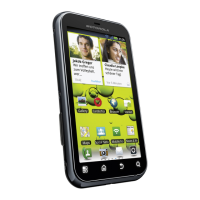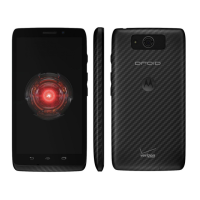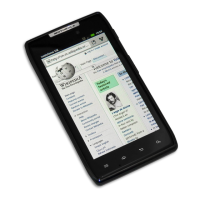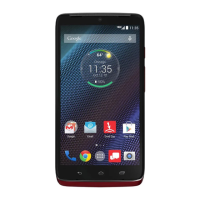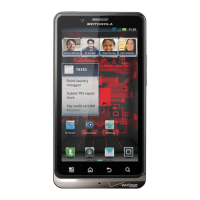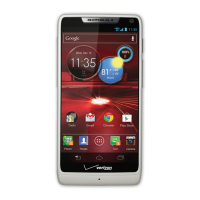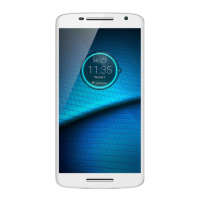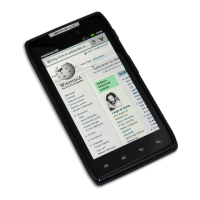59
RF energy interference/compatibility
Nearly every electronic device is subject to RF energy interference from external
sources if inadequately shielded, designed or otherwise configured for RF energy
compatibility. In some circumstances, your mobile device may cause interference
with other devices.
Follow instructions to avoid interference problems
Turn off your mobile device in any location where posted notices instruct you to do
so.
In an aircraft, turn off your mobile device whenever instructed to do so by airline
staff. If your mobile device offers flight mode or a similar feature, consult airline
staff about using it in-flight.
Implantable medical devices
If you have an implantable medical device, such as a pacemaker or defibrillator,
consult your doctor before using this mobile device.
Persons with implantable medical devices should observe the following precautions:
•
ALWAYS keep the mobile device more than 20 centimetres (8 inches) from the
implantable medical device when the mobile device is turned ON.
•
DO NOT carry the mobile device in the breast pocket.
•
Use the ear opposite the implantable medical device to minimise the potential
for interference.
•
Turn OFF the mobile device immediately if you have any reason to suspect that
interference is taking place.
Read and follow the directions from the manufacturer of your implantable medical
device. If you have any questions about using your mobile device with your
implantable medical device, consult your health care provider.
Specific absorption rate (ICNIRP)
SAR (ICNIRP)
Your model wireless phone meets international
guidelines for exposure to radio waves.
Your mobile device is a radio transmitter and receiver. It is designed not to exceed
the limits for exposure to radio waves recommended by international guidelines.
These guidelines were developed by the independent scientific organisation ICNIRP
and include safety margins designed to assure the protection of all persons,
regardless of age and health, and to account for any variations in measurements.
The guidelines use a unit of measurement known as the Specific absorption rate
(SAR). The ICNIRP SAR limit for mobile devices used by the general public is 2 watts
per kilogram (W/kg), and the highest SAR value for this mobile device when tested at
the ear is
1.18
W/kg. As mobile devices offer a range of functions, they can be used in
other positions, such as on the body as described in this guide. In this case, the
highest tested SAR value is
0.58
W/kg. The tests are carried out in accordance with
international guidelines for testing. The SAR information includes the Motorola testing
protocol, assessment procedure and measurement uncertainty range for this product.
As SAR is measured utilising the mobile device's highest transmitting power, the
actual SAR of this mobile device while operating is typically below that indicated
above. This is due to automatic changes to the power level of the mobile device to
ensure it only uses the minimum level required to reach the network.
While there may be differences between the SAR levels of various mobile devices
and at various positions, they meet the governmental requirements for safe
exposure. Please note that improvements to this product model could cause
differences in the SAR value for later products; in all cases, products are designed to
be within the guidelines.
The World Health Organisation has stated that present scientific information does
not indicate the need for any special precautions for the use of mobile devices. They
note that if you want to reduce your exposure, then you can do so by limiting the
length of calls or using a hands-free device to keep the mobile device away from the
head and body.
Additional Information can be found on the websites of the World Health
Organisation (
http://www.who.int/emf
) or Motorola Mobility, Inc.
(
http://www.motorola.com/rfhealth
).
Information from the World Health
Organisation
WHO information
“Present scientific information does not indicate the need for any special
precautions for the use of mobile phones. If you are concerned, you may want to
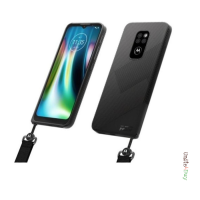
